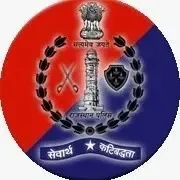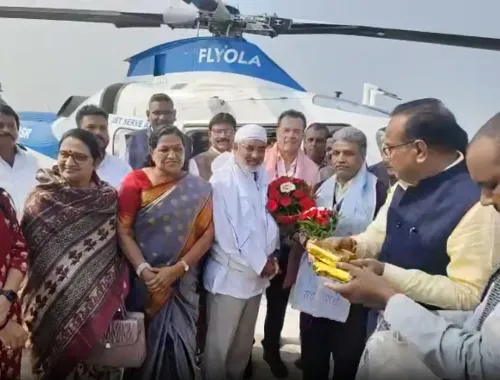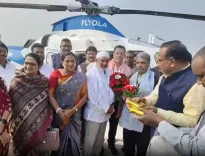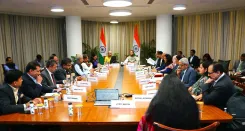How is Tripura CM Strengthening Disaster Management?
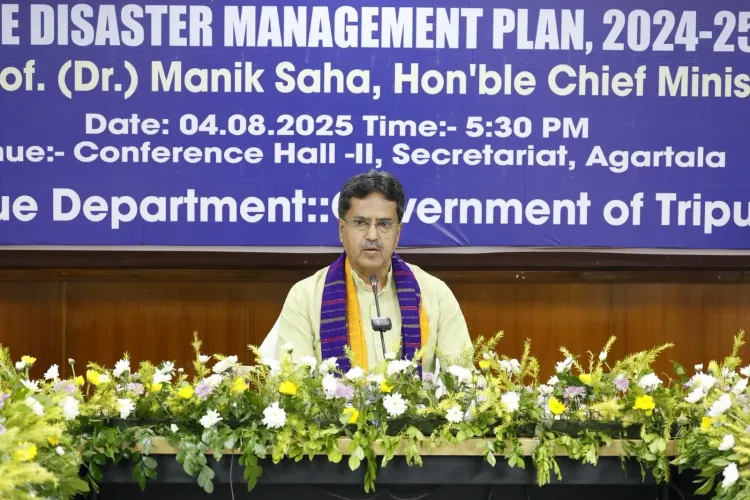
Synopsis
Key Takeaways
- State Disaster Management Plan (SDMP) introduced after nine years.
- Focus on technology-driven initiatives for disaster mitigation.
- Training programs for civil defense volunteers to enhance readiness.
- Integration of automated weather stations for better early warning systems.
- Commitment to long-term sustainability and community safety.
Agartala, Aug 4 (NationPress) In a pivotal step towards enhancing disaster management, Tripura's Chief Minister Manik Saha on Monday introduced the State Disaster Management Plan (SDMP) and launched several technology-oriented initiatives designed to mitigate the effects of both natural and man-made disasters.
During the ceremony at the state civil secretariat, Saha, who also holds the position of Chairperson of the Tripura Disaster Management Authority, underscored the necessity of proactive preparedness to reduce loss of life and property, referencing the catastrophic floods of August last year that resulted in over 30 fatalities throughout the state.
The SDMP 2024-25, unveiled after a nine-year hiatus, embodies a thorough disaster risk reduction strategy that aligns with national and international guidelines, including the Sendai Framework, SDGs, and the Paris Agreement.
Brijesh Pandey, the state's Revenue Secretary, noted that this extensive plan has been meticulously revised through broad consultations and incorporates critical lessons learned from recent calamities.
The two-volume plan delineates a clear methodology for disaster mitigation, response, and recovery, integrating departmental roles and long-term sustainability objectives.
A highlight of the projects inaugurated by the Chief Minister is the Technology Demonstration Unit at Hapania, developed under the NDMA's “Earthquake Resiliency of Lifeline Masonry Structures” scheme at a cost of Rs 50 lakh. This facility will act as a training hub for civil defense volunteers and ‘Aapda Mitras’ in earthquake-resistant construction techniques.
Additionally, the Chief Minister launched the Civil Defence Volunteer Training Programme, aiming to train 2,880 volunteers and 16 master trainers by March 2026 under a centrally-sponsored scheme worth Rs 3.66 crore. An upgrade to early warning systems was also announced, including 26 automated weather stations and rain gauges installed statewide, with plans for further installations and a new Doppler radar in South Tripura.
The Revenue Department introduced an online equipment verification portal to oversee emergency gear across 37 strategic locations and another portal to expedite land use change approvals. This latter initiative, developed under new land diversion regulations, aims to speed up approvals for startups and industrial projects within 14 days. Chief Secretary J.K. Sinha, Director General of Police Anurag, and Revenue Secretary Brijesh Pandey were also present, marking a significant milestone in Tripura’s proactive stance on disaster readiness and technological advancement.

